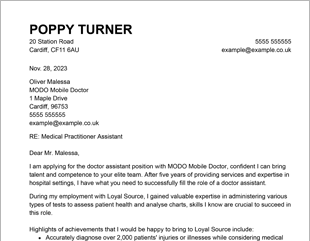How to Write an Effective Cold Cover Letter?
Cold cover letters require a different approach from the average job application cover letter. Here’s how to write an effective cold contact cover letter.
Cold cover letters require a different approach from the average job application cover letter. Here’s how to write an effective cold contact cover letter.





OUR USERS HAVE BEEN HIRED BY

Many job seekers will be familiar with writing cover letters for various job opportunities they come across. However, if you email cover letters out to prospective employers and still haven’t heard back, then it might be time to take a different approach.
The job market focuses a lot on landing a specific job, but what should you do if you want to work for a company that doesn’t have any job openings available? This is where writing a cold cover letter can come in. Let’s take a closer look into how to write an effective cold cover letter with some cold cover letter examples.
There are plenty of different types of cover letters out there, but most candidates would not think to write a cold cover letter. The letter acts as a formal introduction to the Human Resources department of a company.
The header should include all your current contact information, such as:
Keep in mind that most cold cover letters are emailed directly to the hiring manager. You should also include the hiring manager’s contact information in your letter as well:
Introduction and hook
Cover letters give all job seekers the chance to discuss their work experience and skills outside of a formal interview setting. A good cover letter can help you stand out from other candidates and explain why you are the best fit for any given position.
A cold cover letter can help get your foot in the door of a company. It is possible that the hiring manager has not yet posted an open position that you happen to be qualified for, and they will consider you for the role. This letter can also help you expand your network and possibly lead to an informational interview.
Informational (or informal) interviews are basically casual interviews outside the work setting where you can get to know more about the hiring manager and the company they work for. Oftentimes, you can learn a lot of insider information about the company culture and how employees operate overall before you ever land the job, which can be extremely valuable in your job search.
If you are still struggling to write a great cover letter, then try using a cover letter builder tool. These tools have plenty of cold cover letter examples, cover letter samples, and other cover letter tips to help you craft the perfect cold cover letter.
We personalize your experience.
We use cookies in our website to ensure we give you the best experience, get to know our users and deliver better marketing. For this purpose, we may share the information collected with third parties. By clicking “Allow cookies” you give us your consent to use all cookies. If you prefer to manage your cookies click on the “Manage cookies” link below.